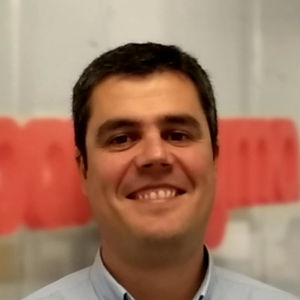“Remember that today we have to move several things to production,” you hear first thing in the morning at the Product Development Daily Meeting. This time, it refers to 3 use cases (different from the 10+ use cases we have already delivered) in an advanced analytics project we developed more than 2 years ago for an energy client. The most surprising thing is that this no longer creates a stressful or nerve-racking situation for the team, but... how did we achieve this?
In 2019 we started working on a project to develop use cases for AI, Machine Learning, advanced analytics, etc. From the very beginning, everyone in the organization wanted to have a product that would help the company to make better decisions by taking advantage of the huge volume of data that it has at its disposal, but even though a lot of progress had been made on the technical side, not everything was working at the management level.
From then until now, we have encountered all kinds of situations that are very common in this type of ambitious projects, such as a lack of alignment in the goals, different visions regarding the priority of the project, interlocutors who were not the right ones, a large turnover in the team or a lack of availability of key roles for the project.
Although all these situations are normal in any company, they require a well-designed plan in order for each problem to be solved. Where to start?
Our itinerary
First of all, we had to develop a framework to define two key issues for each role and service in the project: their scope of action and, more importantly, their responsibilities. To this effect, we relied on our experience developing this sort of projects and used Polaris – our add-on to agilism – as the foundation.
Once this was out of the way, we tackled the challenging task of identifying the problems we faced. In order to do so, we needed to look back so as to avoid deceiving ourselves, and call a spade a spade and accept what was happening. This is the only way you can come up with a plan that will help you to prevent all your problems from causing your project to fail.
Eight problems, and how to solve them
With this vision, we were able to address each of the problems we detected and propose specific solutions to solve them:
- A lack of availability of key roles
The solution we arrived at was to create a Business Support team (made up of functional analysts and data analysts), which helped to unburden the client. The Polaris element we used was the Adaptative Framework.
- A lack of work in the future for the team
The solution involves planning ahead on an ongoing basis and within an appropriate timeframe (2-3 months) in order to get a clear picture of the work that needs to be carried out in the short and the medium term. In addition, it is essential for the Support team to work on discovering new needs. The Polaris tool for solving this problem is Continuous Discovery.
- A lack of quality in the product delivered
To solve this problem, we need to make the Quality Service part of the Product Development team. This way, all necessary quality rules will be agreed on and subsequently observed. We will guide ourselves by the Technical Quality element.
- A lack of specific project goals and expectations
To find the solution to this problem, we need to answer, together with the clients, questions such as: What would represent a success in this project? What brings real value to the company? This will lead us to define project metrics and KPIs and display them on a dashboard (Obeya Room) for project monitoring and operational control. Here we use two elements: True North and Worthy Metrics.
- A drain of talent from the team
How can this problem be addressed? By eliminating potential silos in our organization, e.g. merging development teams into a single team, to mitigate the impact of key people leaving, together with devising a task rotation and content development schedule in order for the entire team to be aware of everything that is developed. The solution lies in using Team Experience.
- A lack of foresight of other possible changes
The solution to this problem was found by managing the Risks and Problems detected in the project so as to take measures to mitigate such situations and identify their level of impact on the project and the people who will be responsible for helping to mitigate them. We focused on Risk Focus.
- The lockdown due to the COVID-19 pandemic
To overcome the situation created by the pandemic, the use of new online tools was key to optimizing communications, meetings and productivity. The Polaris element we used was Productive Mode.
- A lack of identification of valid interlocutors for solving technical problems
Creating follow-up sessions and checkpoints with the key people we identified and making proposals of technical solutions inside the client’s infrastructure are crucial to find a solution to this problem. Technical Quality is the element we use.
In short, with Polaris we have been able to find “real solutions to real problems” and we are managing to concentrate on giving the best answer to this type of constantly changing projects.
What lessons have we learned during this time?
- We must call a spade and try not to be fooled by specific problems.
- We need to remain highly flexible to be able to adapt to the changes that will surely happen throughout the course of the project.
- More haste, less speed. We need to take time to think things through before taking any action that might affect the project.
- People are an asset in themselves, so we need to actively listen and talk to all participants in a project (client, providers, external collaborators, the team...) on a regular basis.
- We need to keep project management separate from the problem-solving methodology we use. While it is important to have a specific methodological framework, it is essential not to lose sight of the scope and goals of the project so as not make the mistake of betting everything on one fashionable methodology or framework.
- There are common management issues in all projects that should be closely monitored: people management, risk management, budget management, project planning, quality monitoring, customer support, communication management, and expectation management.
Thanks to all of this, we have managed to come out stronger and better every time we have had to make a relevant change in our projects: we have the right tools and framework to find a solution to, and thus solve, any contingency that might arise both in the project and otherwise: a pandemic, a turbulent market or, dare I say it, even a meteorite... So don’t panic!
Comments are moderated and will only be visible if they add to the discussion in a constructive way. If you disagree with a point, please, be polite.





Tell us what you think.